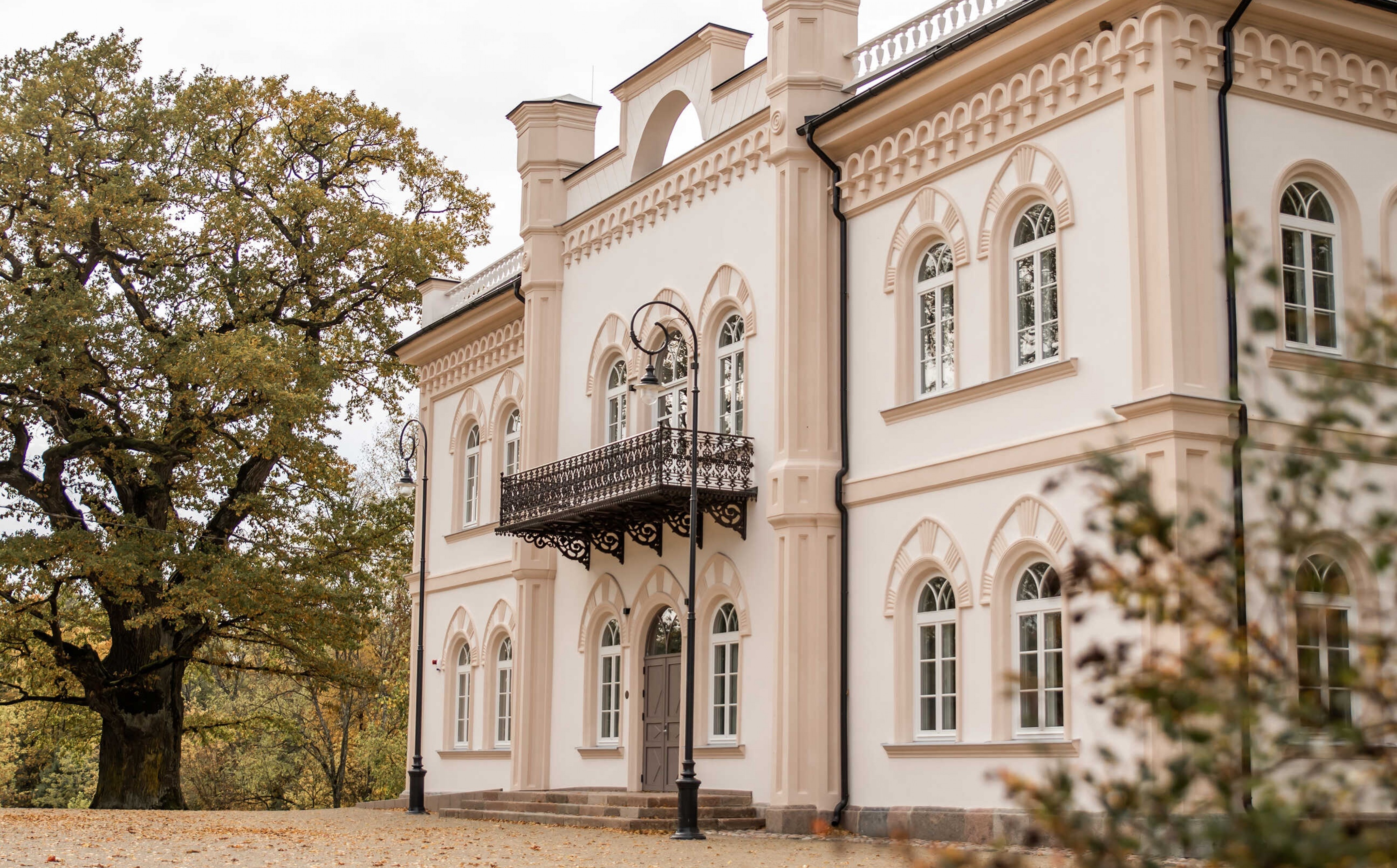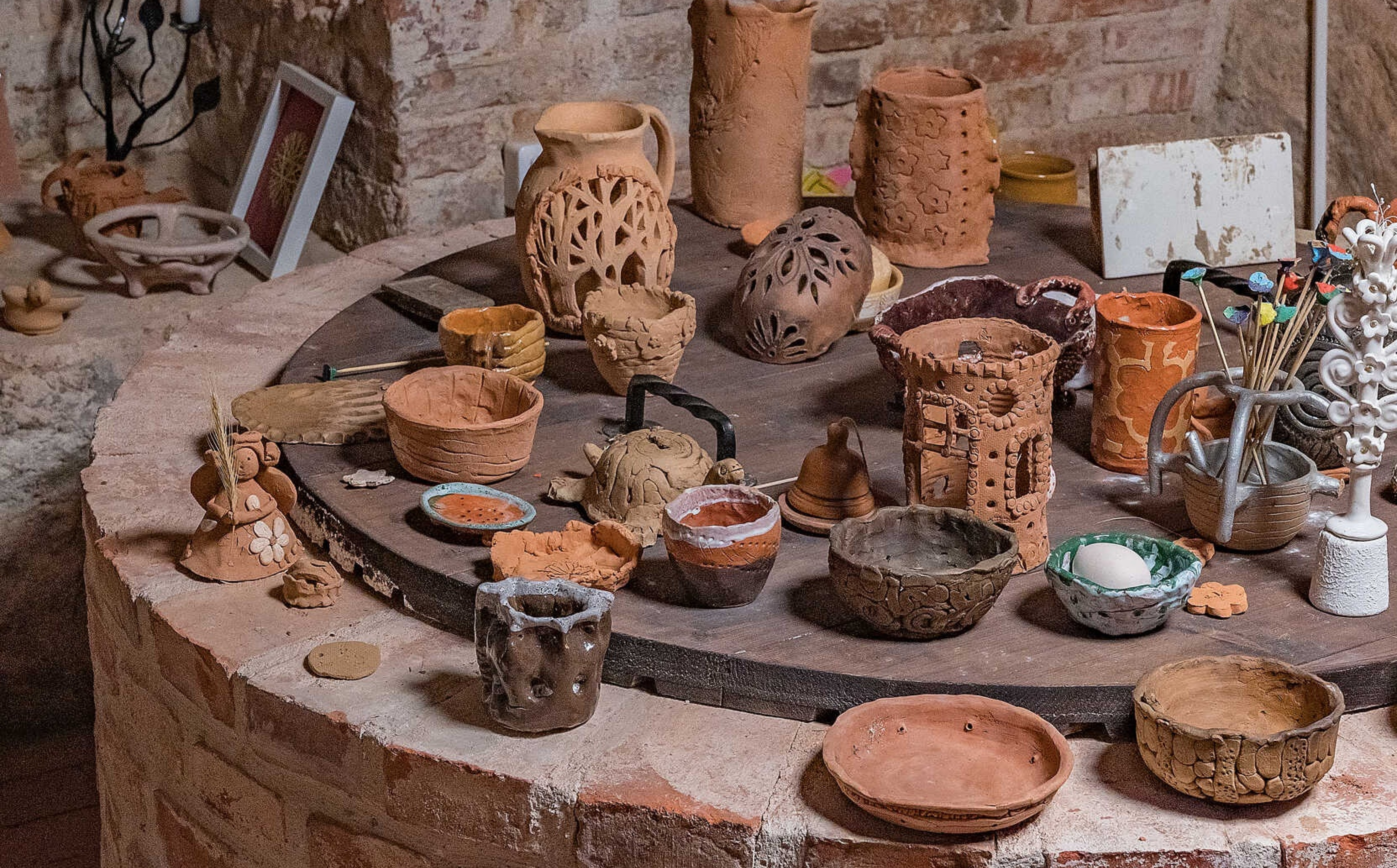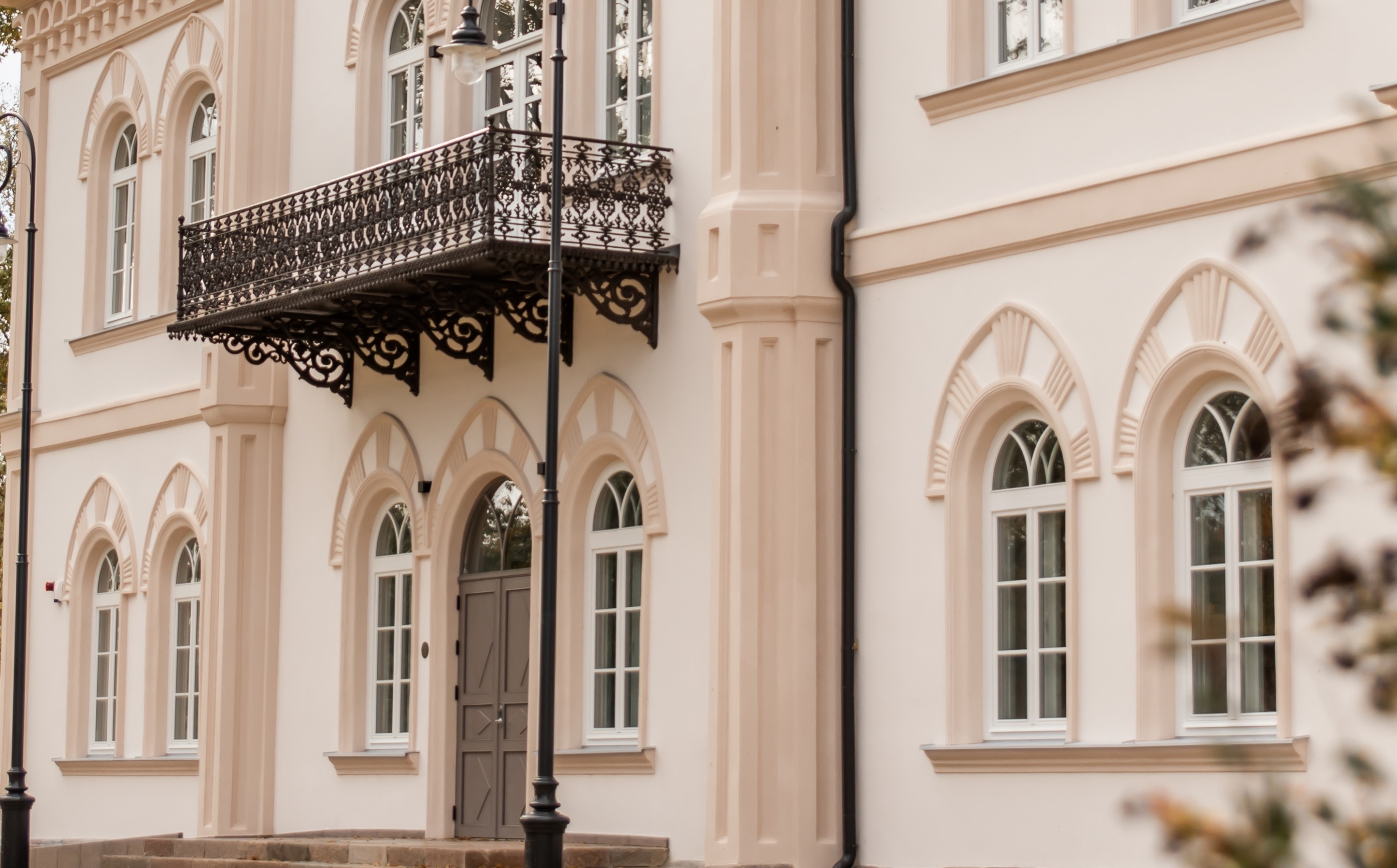Glitiškės Manor
- Home
- Castles and Manors
- Glitiškės Manor
Glitiškės is a village in the Vilnius region, located 5 km north of Pabaržė. Until the mid-nineteenth century, there was an old (1483) beautiful one-story larch manor house in Glitiškės, the drawing of which was preserved in the family collection until the First World War. Over the years, the owners of the manor changed, until in 1756, the manor was purchased by the nobleman of Mazyr County, Mikalojus Jelenskis. In 1860, Kazimieras Jelenskis, the marshal of the nobility of Mazyr County, 50 meters from the shore of Lake Širvis, erected a two-story neo-gothic palace. The palace, along with the entire residence, was designed by the architect Augustinas Kosakovskis. The last owner of the court, Kazimieras Jelenskis, met a tragic fate: in 1943, he died in the Nazi concentration camp in Aušwitz.
The representative part of the palace, in a regular rectangular projection with a seven-axis front facade from the east, has a three-axis pseudorisal, flanked by the multisided towers. On the first floor of the palace, above the main entrance, there is a long balcony, surrounded by a decorative wrought iron balustrade. There are two wings on the western facade of the main body: the south-west one-story and the north-west one-story. Between them and the 1980s, there were wide stairs with an excellent view of the lake. The occupation authorities built a wide terrace there and arranged a cinema in it, a disco room. Currently, there are auxiliary rooms for the concert hall. One of the internal walls is decorated with fragments of frescoes reminiscent of old times, a remnant of the authentic beauty of the palace.
Valuable buildings of the manor house have been preserved: an original two-story ice house with a pyramidal roof, a long rectangular barn with semi-circular arched windows and niches, an annexe and a horse stable. The manor in Glitiškės has the status of a protected object by the state, and since 1992 it has been entered in the register of cultural values of Lithuania.
From the village side to the manor, a kilometer-long avenue was planted with pyramidal poplars. South of the alley there was a 12-hectare park, set with oaks, linden, maples, larch, and chestnuts. The unique oak growing next to the palace is about 600 years old. It is one of the tallest (about 28 m) and the fourth thickest (7.65 m) oak trees in Lithuania. Moreover, it is currently protected by the state as a natural monument. Perhaps patriotic youth gathered in front of it and planned to go to Vilnius and join the troops participating in the uprising of 1830–1831.
During the First World War, the palace survived due to a payment of five rubles to a Cossack. Faced with the advancing German army and an order to set it on fire, the payment spared it. However, after the Second World War, only the walls remained. After the war, it housed state farm offices, then a school, and now, since 1996, a library and cultural center, a branch of the ethnographic museum of the Vilnius Region, a reading room, and a computer room. There is an art school, thanks to which children and youth learn pottery and create artistic objects from straw and paper while learning the secrets of folk art, both Polish and Lithuanian. In 2023, after several years of renovation, the manor was inaugurated and presented to the public.



